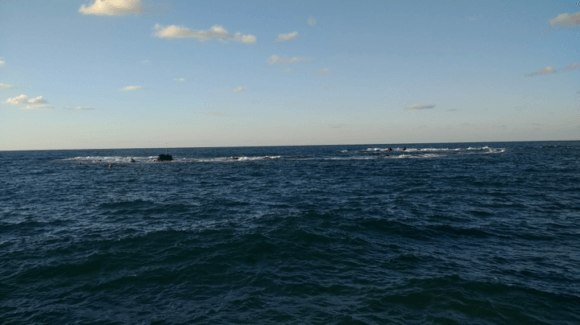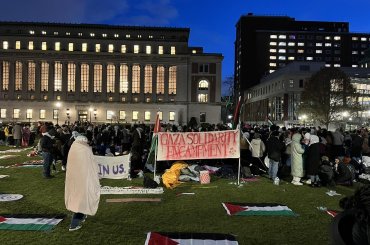Amirah AbuLughod is a farmer living in New York and a granddaughter of one of the 120,000 Palestinians displaced from Yaffa in 1948. She visited Yaffa on Interfaith Peace-Builders’ recent Olive Harvest Delegation. To read more delegate reflections from the trip got to www.ifpb.org/del63.
I walked these streets – we walked these streets – with a man whose family stayed after the Nakba in 1948. His family was one of only 4,000 who stayed out of an original population of 120,000.
My family was one of those who had the means and opportunity to leave.
I learned on the tour of my grandparents’ city that those who stayed were forced into Ajami – the refugee camp ghetto created for Yaffa refugees on their own land. The ghetto was dismantled only after Holocaust survivors witnessed Ajami and saw something all too familiar.
We walked through the now artist village which was once the location of my siedo’s (grandfather’s) home. I’m told by family that the site of his home looks so very different than it once did. As we sat in the beautifully landscaped park surrounded by greenery, blooming bougainvillea, and a salty breeze from the Mediterranean, our guide informed us that any open space in Yaffa was once the most populated. The most populated areas were the first to be demolished, flattened to the ground – they now lay barren of homes, filled with people enjoying the view of the Mediterranean Sea.
According to most people’s definition, Yaffa is a beautiful city – sea side views, a bustling shopping scene, an artist’s village, restaurants everywhere you turn.

I found myself struggling to see the beauty. I knew what I was seeing was nothing like the Yaffa my grandparents called home and what did resemble their existence there felt like a restoration of mockery. It looks nothing like what my ancestors called home because my ancestors were those people who lived on “the land with no people for a people with no land.”
I looked out over the Mediterranean Sea, a piece of the scenery that hadn’t changed since my family’s presence. I realized that the water, the sea still remembers my grandmother’s face looking out over its expanse. That sea holds the familiarity and memory of all of those ancestors.
And so, I turned away from the land and focused on the water. Grateful.
Grateful to have the opportunity to hear from those people of Yaffa who stayed, survived and continue to survive. Grateful to be able to look over the water and see what my ancestors saw and grateful to be able to show the sea my face. A hopeful face, a humbled face, the face of her granddaughter.



Thank you!
It is often overlooked that Yaffa was part of the Palestinian state according to UNGA Res 181 (Partition), not the Israeli state. The drafters of 181 of course realized that leaving Yaffa as a Palestinian island within Israel would cause logistical problems for the Palestinians, but the alternative divisions, they pointed out, would inconvenience the Israelis. The truth, I think, is that they knew that it wouldn’t matter. They knew that Israel would simply take it.
By the way, are you related to the Abu-Lughods, the authors/researchers?
Amirah, thanks for sharing your story so that others could bear witness to another example of the seemingly countless Israeli atrocities against the native Palestinians.
Why did Jaffa fall so easily, anyway?
https://www.haaretz.com/jewish/books/.premium-1.669862
“According to most people’s definition, Yaffa is a beautiful city – sea side views, a bustling shopping scene, an artist’s village, restaurants everywhere you turn. ”
More ‘lemon tree in the courtyard’, BS.
Yaffa is either rundown and unattractive, or touristy. Amirah’s picture postcard shot , is not representative at all, and she knows it. Traffic, narrow streets, grime and gentrification.
Ugh.